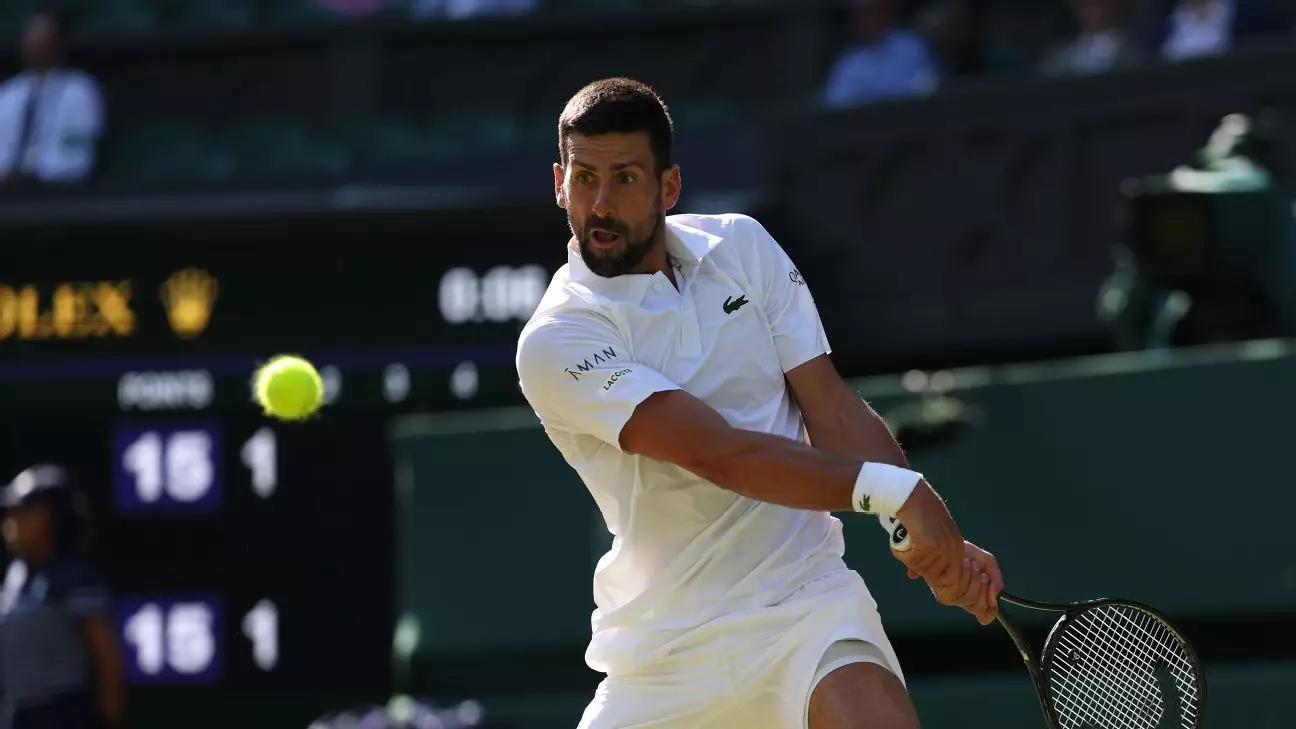In the wake of his recent defeat at Wimbledon, Novak Djokovic’s departure from Centre Court was anything but definitive. The 38-year-old tennis legend’s walk-off—marked by a heartfelt wave and the raucous applause of an adoring crowd—left spectators and critics pondering whether this marked the end of his illustrious career at the All England Club. While Djokovic professed optimism about returning, his words carried undercurrents of vulnerability and ambiguity that challenge the narrative of a clean farewell. His emotional response, combined with a wavering belief about whether this could have been his final match, underscores the complexity of age, legacy, and the relentless pursuit of excellence in professional tennis.
The idea that a player of Djokovic’s caliber might choose to step away after a loss sparks debate about the toll of relentless competition on mental health and physical well-being. Yet, his comments revealed a man still fighting against the sediment of time that threatens to erode athletic dominance. The scene on Centre Court was more than just a farewell; it was a raw moment of human imperfection—an athlete acknowledging the possibility of retirement while holding onto the hope of resurrection. His defiance of closure, insisting he intends to return at least once more, serves as an implicit challenge to the narrative that age should be a limiting factor. Instead, it points to a desire to preserve legacy and connection to the sport that forged it.
Uncertainty Among Legacy and Future Plans
Djokovic’s reflection on his recent performances — especially his struggles to dominate at Grand Slams this year — reveals the internal conflict faced by athletes pushed to their physical and mental limits. His admission of being “quite a bit” physically compromised indicates that even the most resilient champions are not immune to the brutal toll of professional sport. Still, his unwavering focus on Grand Slams as the tournaments that matter most demonstrates a central aspect of his identity: a relentless pursuit of victory on tennis’s biggest stage. His recent losses to young stars like Carlos Alcaraz and Jannik Sinner are emblematic of a changing of the guard, and Djokovic’s acknowledgment of this transitional period reveals a nuanced understanding of his place in the sport’s history.
Furthermore, Djokovic’s plans for the upcoming U.S. Open highlight a pivotal crossroads. While he has expressed intentions of competing, the future remains uncertain—his schedule, health, and inner motivations will ultimately dictate whether he extends his career or finally cedes the stage. His record-tying 24 Grand Slam titles and the subsequent fade from the dominant player he once was suggest that whoever is next faces a profound challenge: the legacy of a legend who refuses to fade quietly.
The Broader Implications of a Changing Tennis Landscape
The recent surge of young, dynamic competitors like Alcaraz and Sinner reflects a broader shift within professional tennis, challenging the dominance of veterans like Djokovic. Their recent victories and emerging rivalry symbolize not just new talent but a paradigm shift that redefines what it means to be a great player. Djokovic’s reflection on his own performance in a sport where youth seems to accumulate momentum points to a crucial truth: the window of dominance narrows, no matter how colossal the resume.
Yet, this evolution isn’t purely about aging or the rise of new champions; it’s also about tennis’s capacity for renewal and reflection. Djokovic’s future at Wimbledon and beyond will serve as a barometer for how aging athletes navigate their final chapters—whether with grace, defiance, or acceptance. His statements suggest a desire to linger, to fight against the inevitable, but also a recognition that time’s unrelenting march is unavoidable. The sport is in transition, and Djokovic’s next move will not only define his own legacy but also offer insight into how the centennial-old institution of tennis adapts to its newer, youthful face.
The question remains: Is Djokovic willing to accept the changing tide, or will he defy the push of time, making his final stand—whether on Centre Court or elsewhere—an emblem of resilience and hope? His story is far from over, but the shadows of retirement linger, and his next steps will influence the future trajectory of tennis’s centering political and cultural narrative.


Leave a Reply